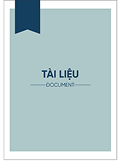Tài liệu
Measuring financial inclusion: a composite FI index for the developing countries

Xem mô tả
156
Xem & Tải
9
Tóm tắt
Purpose – The purpose of this paper is to focus on measuring financial inclusion (FI) level for the developing countries. Design/methodology/approach – By using a two-stage principal component analysis method, we construct a composite FI index to measure the degree of FI. Data are collected through secondary sources including World Bank and IMF reports for the period 2012–2018. Findings – We have built an overall FI index which is considered as a comprehensive measure of FI, a useful tool for policymaking and policy evaluation. Comparison with other studies shows that our FI index corroborates with them. Practical implications – Building a good FI measurement method is important for developing countries. It helps to assess and compare the level of FI of each country and between countries together, made easily and accurately. Originality/value – This study emphasizes the important role of FI in the economy. From there, an FI solution is integrated into the construction and calculation of its impact on other factors. This will help policymakers to take effective measures to increase FI levels to achieve sustainable economic growth
Mô tả
economic management and policy
Tác giả
Nguyen, Thi Truc Huong
Người hướng dẫn
Nơi xuất bản
Nhà xuất bản
Kinh Tế Quốc Dân
Năm xuất bản
2021
ISBN
1980-0020
ISSN
Từ khóa chủ đề
Financial inclusion , Measuring financial inclusion , FI index
Trích dẫn
Bộ sưu tập
Tệp tin

10-1108_JED-03-2020-0027.pdf
D:\NEU_DSpace\tapchitienganh
Dung lượng: 336.74 KBĐịnh dạng: pdf
Lượt xem: 0 Lượt tải: 9
